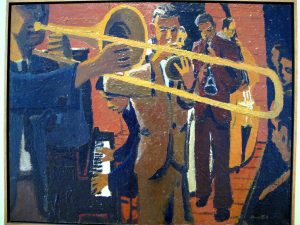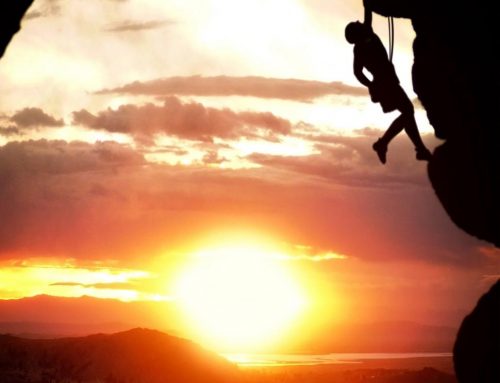
The Jazz Musicians (1954), David Park
I recently came across an interesting article in The Harvard Business Review by Hal Gregerson, the executive director of the MIT Leadership Center. In it, he draws connections between a photographer’s creative process and how leaders can learn from that process. It started me thinking: what insight can we glean from artists? There is plenty of literature out there about what executives can learn from athletes, musicians, and the like. Gregerson’s article prompted me to probe the literature a bit more to see if I could find some new insights.
Gregerson writes that photographers don’t chase a subject with their lens. They find the right setting or background and look for that dynamic subject or situation to enter the frame. They don’t seize upon the first “shiny object.” Gregerson sees a similar approach among successful leaders. They “believe great opportunities must be made, and work at building the layers of creative insight from the back.” How? “[Leaders] are framing the background conditions that will allow creative thinking to flourish and be heard – in large part by tamping down their own impulses to be hard-charging, full of answers, and quick to intervene.”
“Taking a lesson from one field and applying it metaphorically to another is always a great way to spur fresh thinking about a hypothesis. But I want to underscore that this isn’t just a metaphorical lesson, because executives aren’t only like photographers. They are photographers, quite literally…”
Jazz musicians are known for their improvisation. In an HBR podcast, musician and writer Frank Barrett says that leaders can learn the improvisational mindset from jazz musicians. You’re working in a group, he says, creating music and playing it on the spot. There is no time to ask questions or second guess. You create something from nothing. And there is no time for problem solving. Barrett says that while problem solving is necessary, it is not sufficient to make great things.
“There’s a temptation to play what you’ve done well in the past because you’re on the spot having to make something up in front of an audience. And it’s in public, and you can’t take it back, much like executives have to take action, and they can’t take it back. It’s in public. It’s a commitment. So jazz musicians have to sort of trick themselves into unlearning their own routines and habits so they don’t automatically fall back into cliches. And great leaders are able to help people dislodge their routines so that they pay attention.”
Artists in general walk the line between the known problem and the unknown solution. The unknown is often an uncomfortable place, as the photographer and jazz musician examples showed. But so, too, must leaders get comfortable with the unknown and the possibility of failure. Nobel-prize winning writer Samuel Beckett, best known for 20th century avant-garde theater, said: “Ever tried. Ever failed. No matter. Try Again. Fail again. Fail better.” Artists and leaders must first articulate a vision in their heads: an image, a sentence, or an outcome. They must communicate that vision and, for many artists and all leaders, work with others to make it a reality. What if we approached management as more art and less science?





